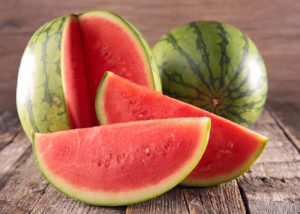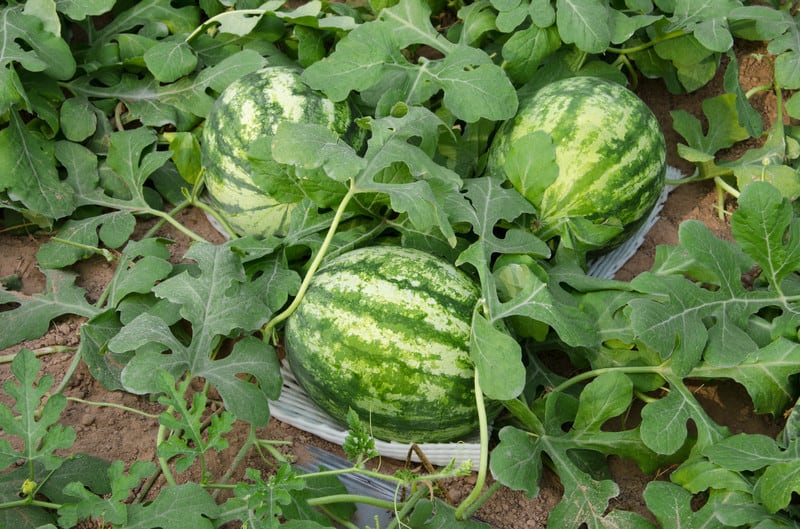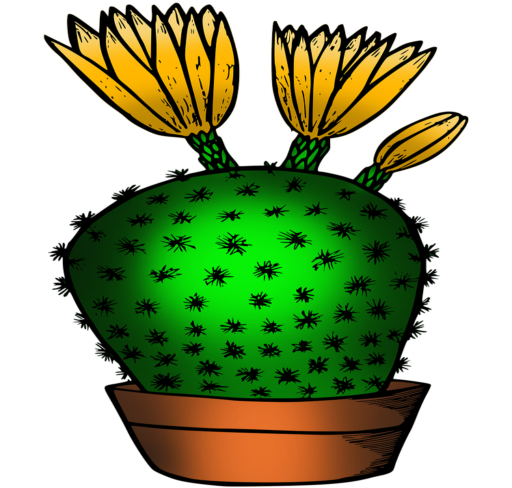How to Plant Watermelons

Sowing Seed Indoors
Direct sowing is recommended, but to get a head start you can start watermelon indoors 3-4 weeks before the last frost in individual biodegradable pots indoors. Sow 2-3 seeds per pot.
Sow seeds 1 inch deep in seed-starting formula.
Keep the soil moist at 70 degrees F.
Seedlings emerge in 7-10 days.
As soon as seedlings emerge, provide plenty of light.
Seedlings do not need much fertilizer, feed when they are 3-4 weeks old using a starter solution (half strength of a complete indoor houseplant food) according to manufacturer’s directions.
Thin to one plant per pot. PLEASE NOTE: Seedless varieties do not produce pollen and therefore cannot pollinate themselves. A pollinator (seeded variety) is included to insure a good fruit harvest. Both seedless and the pollinator seed must be planted together. The pollinator seed is the larger seed.
Before planting in the garden, seedling plants need to be “hardened off”. Accustom young plants to outdoor conditions by moving them to a sheltered place outside for a week. Be sure to protect them from wind and hot sun at first. If frost threatens at night, cover or bring containers indoors, then take them out again in the morning. This hardening off process toughens the plant’s cell structure and reduces transplant shock and scalding.
Sowing Directly in the Garden
Sow in fertile, warm soil after danger of frost has passed.
Sow seeds 3 inches apart in groups of 4-6 in raised hills. Cover with 1 inch of fine soil and firm lightly.
Space groups 5-7 feet apart each way.
Keep evenly moist.
Seedlings emerge in 7-10 days.
Thin to 2 or 3 strongest seedlings in each group when they are 1-2 inches high.
How to Grow Watermelon

Keep weeds under control during the growing season. Weeds compete with plants for water, space and nutrients, so control them by either cultivating often or use a mulch to prevent their seeds from germinating.
Watermelon plants have a shallow root system, mulches help retain soil moisture and maintain even soil temperatures.
Keep plants well-watered during the growing season, especially during dry spells. Plants need about 1-2 inches of rain per week during the growing season. Use a rain gauge to check to see if you need to add water. It’s best to water with a drip or trickle system that delivers water at low pressure at the soil level. If you water with overhead sprinklers, water early in the day so the foliage has time to dry off before evening, to minimize disease problems. Keep the soil moist but not saturated.
Do not move the vines, they are easily injured.
Monitor for pests and diseases. Check with your local Cooperative Extension Service for pest controls recommended for your area.
Harvest & Preserving Watermelon
Watermelons are ripe when the tendrils next to the fruit turn brown.
The spot where the fruit rested on the ground will turn to a creamy yellow.
When you tap on the watermelon it will have a dull or hollow thud rather than a sharp sound.
To avoid damage, cut the watermelon off the vine with sharp shears.
Watermelon may be stored for one to two weeks in the refrigerator. For cut watermelon, wrap the cut side in plastic wrap and store in the fridge for 3-4 days.
